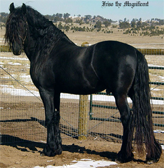The end of the winter allows horse owners to hop back on the saddle and start more vigorous riding and training. Spring is one of the most pleasant times of the year to ride, but it comes with its own struggles as well. Your horse’s hooves may experience a litany of problems that come with the transitioning temperatures and an increase in mud and wetness. The most common of these conditions is mud fever, which can be recognized by scabbing and infections on your horse’s hooves and legs.
The wet ground in springtime may actually be detrimental to your horse’s hooves. Mud caked on your horse’s hooves and legs can hold infectious bacteria called dermatophilus congolensis. While it refers to a multitude of skin conditions, mud fever is the common name for these skin conditions caused primarily by these bacteria. Other horses may be infested with chorioptic mange mites, which are parasites that affect cattle, horses, and other livestock. In addition to these mites, damaged hooves may also be at risk from Spherophorus neaophorus, a fungus that eats away at the underside of the hoof. These infectious agents thrive in muddy conditions, so it is important to be aware of their negative effects on your horse’s hooves.
Characterized by acute inflammatory reactions, mud fever and other damaging parasites may lay dormant in your horse until the skin is damaged. Mud fever may cause scabbing, fissures in the skin, thick white discharge, or heat, swelling, and pain. If your horse’s hooves appear to be at all scabbed, bruised, or display any signs of infections, it is likely a form of mud fever. If the discharge from your horse’s feet is foul smelling and black or dark, it may be a warning sign of thrush. Mud fever ca occur due to wet hooves and thrush is caused by cut and scrapes on the legs or hooves of your horse. Prolonged damp or wet conditions, washing your horse without drying afterward, and generally unhealthy skin can all be contributors to mud fever. Prevention is as simple as keeping your horse’s hooves dry and washing away mud and dirt.

Treatment options for most forms of mud fever and thrush are generally similar. To attack the organisms that cause mud fever, the scabs must be removed from the horse’s feet. This can be a painful process, so sedation is sometimes needed. Some larger scabs should be soaked in order to remove them. After removal of the scabs, it is important to wash the infected areas with disinfectant, iodine wash, or a medicated shampoo. Next, the most important step is thoroughly drying the limb and applying a topical lotion or cream. This process must be performed regularly in order to treat the infection.
As for thrush, it is important to pick your horse’s hooves and look for the warning signs of the infection. If your horse does develop thrush, swab the infected frog with cotton. After removing the excess, soak the cotton in solution. These solutions should be commercial products, but bleach can also work at the expense of drying out hooves with recurrent uses. Re-wipe all areas of the hoof with the swab, applying some pressure to these areas. The swab should become darker as you go, which is an indicator of the infected tissue. We recommend a daily protective swabbing to ensure thrush does not develop.
Keeping your horse healthy and happy starts with proper grooming. Our Quadrabiotic Enzyme Ointment helps your horse stay clean, dry, and disease free. To create our ointment, four medications are combined into a soothing water-based cream that effectively treats infected/raw/swollen skin and combat secondary bacterial infections from active Eczema cases. Click below to shop all of our products.





; ?>/wp-content/themes/twentyten/img/NMImacLogo_150.jpg)






